| Cleavage Mode |
Definition |
Example |
| basal | Cleavage exhibited on a horizontal plane of the mineral by way of its base. Minerals with cleavage can sometimes be "peeled". |  mica mica |
| prismatic | Cleavage exhibited on some prismatic minerals in which a crystal cleaves by breaking off thin, vertical, prismatic crystals off of the original prism. | 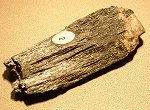 hornblende hornblende |
| cubic | Cleavage exhibited on minerals of the isometric crystal system crystallized as cubes. In this method of cleavage, small cubes evenly break off of an existing cube. | 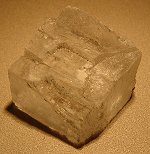 halite
halite |
| rhombohedral | Cleavage exhibited on minerals crystallizing in the hexagonal crystal system as rhombohedrons, in which small rhombohedrons break off of the existing rhombohedron. | 
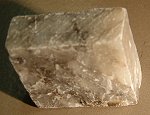 calcite
calcite |
| octahedral | Cleavage exhibited on minerals of the isometric crystal system crystallized as octahedrons. In this method of cleavage, flat, triangular "wedges" peel off of an existing octahedron. | 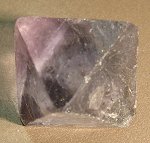 fluorite
fluorite |
| dodecahedral | Cleavage exhibited on minerals of the isometric crystal system crystallized as dodecahedrons. | 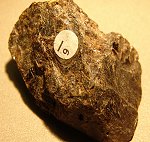 sphalerite
sphalerite |
| Fracture Mode |
Example |
|
| conchoidal | Fracture resembling a semicircular shell, with a smooth, curved surface. An good illustration of a conchoidal fracture is a large chip in a piece of glass. This fracture is also known as "shelly" in some references. | 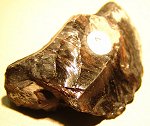
 obsidian obsidian |
| uneven, irregular | Fracture that leaves a rough or irregular surface. | 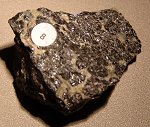  chromite
chromite |
| fibrous, splintery | Fracture that forms elongated splinters. All fibrous minerals fall into this category. | 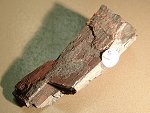  hematite
hematite |
| hackly | Fracture that resembles broken metal, with rough, jagged, points. True metals exhibit this fracture. This fracture is also known as "jagged". |  graphite
graphite |
Photos by Jeff Thomas, November 29, 2004.
Examples purchased from DJ
Minerals.
Definitions from Minerals.net.